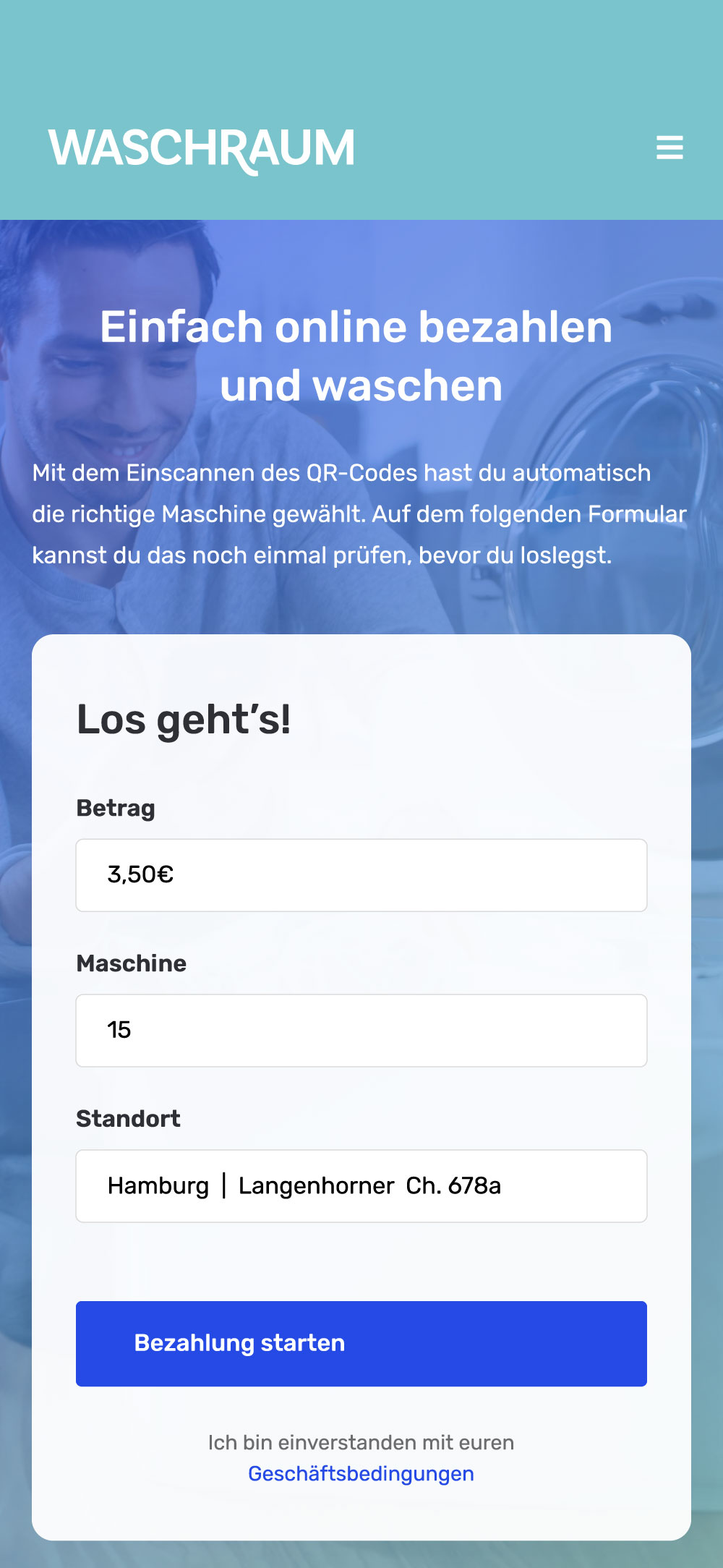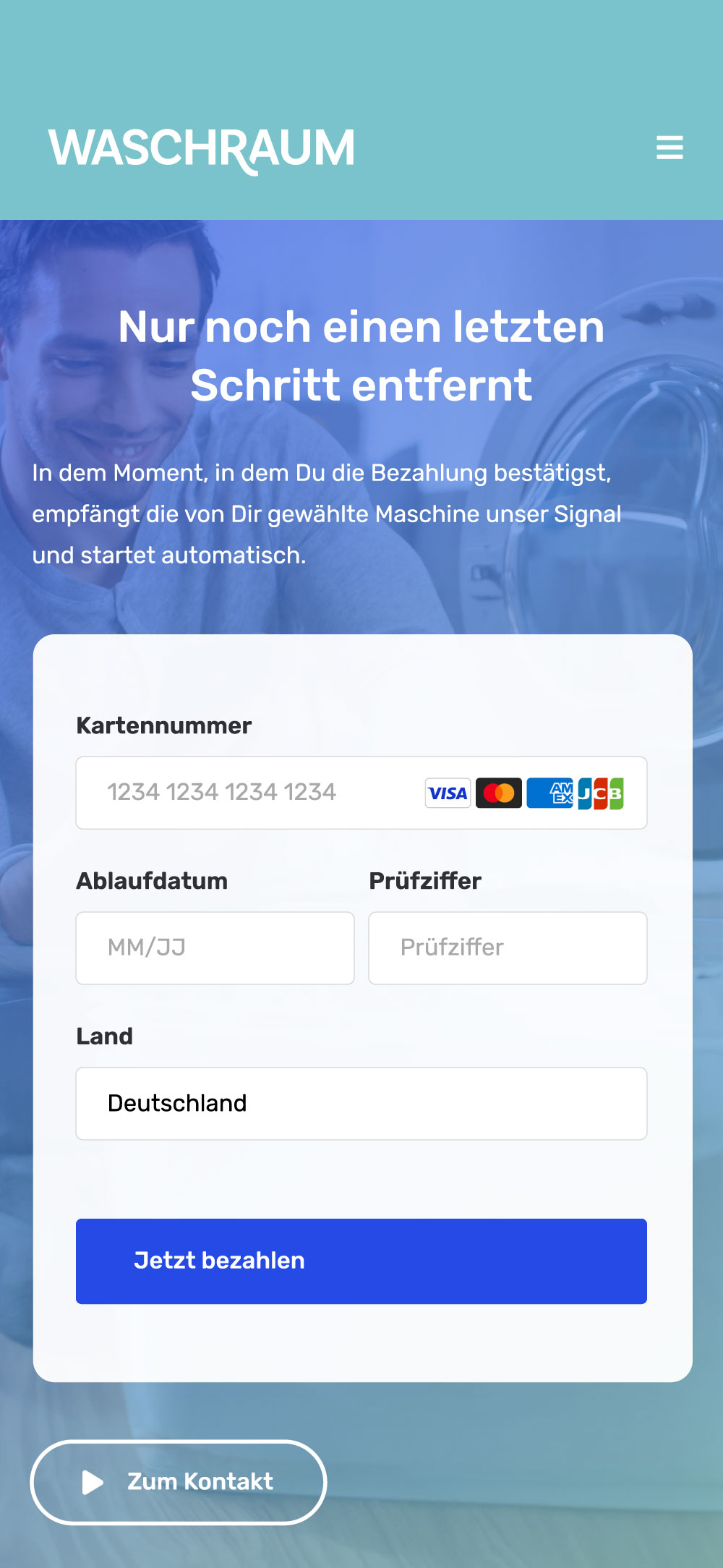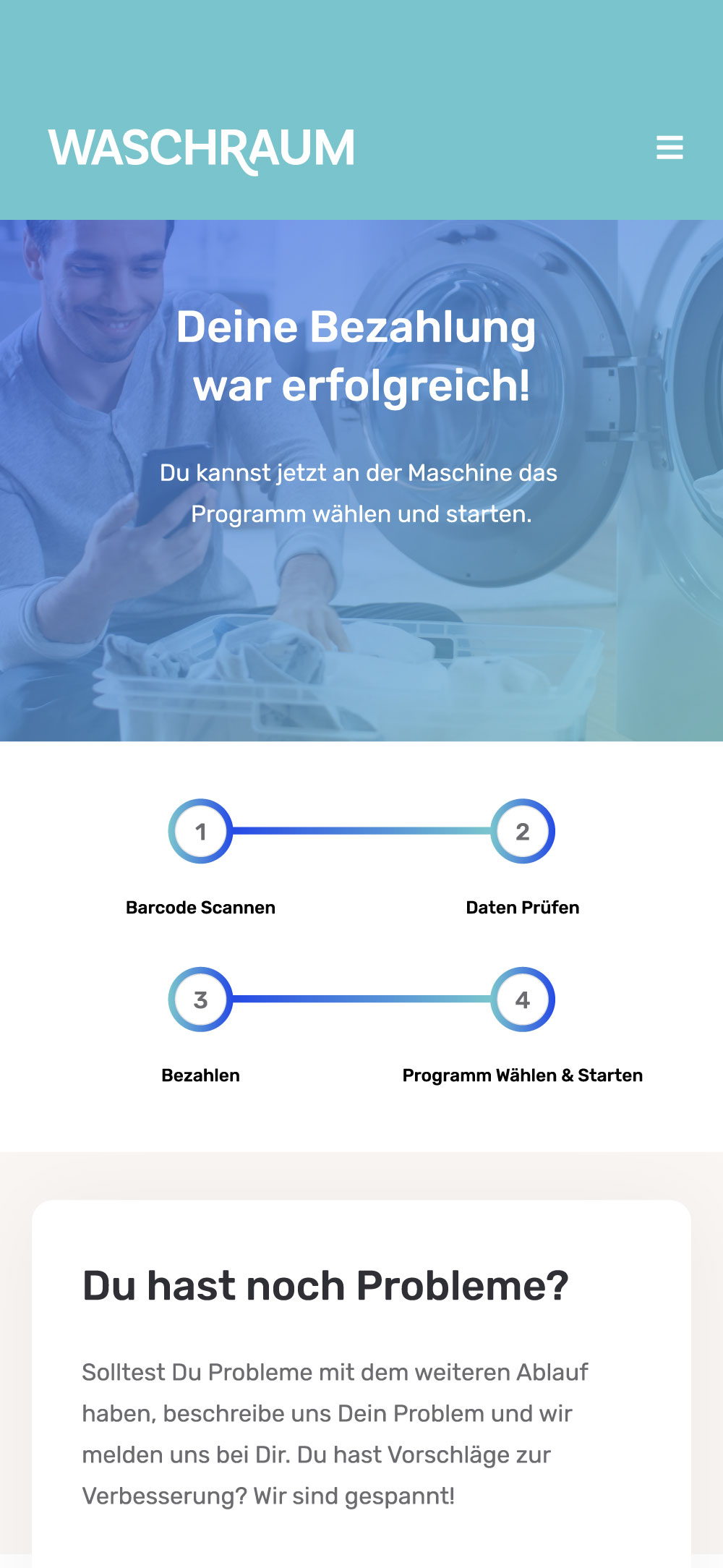


01. The Task.
Waschraum, Northern Germany’s largest laundry service, formerly under the Eco-Express brand, commissioned us with a complete relaunch of its activities. Starting with a new branding through to a completely functional application environment that enables customers to make mobile payments.
After our first meeting, it became clear that equipping around 20 laundromats would require a huge investment, both in terms of designing the user journey and developing the technical hardware. We therefore advised our client to proceed step by step. For each goal we developed, we thoroughly tested the user feedback to understand whether it would be worth investing so much time, energy and financial resources.
02. The Prototype.
The first step was therefore a lean technical setup that would allow us to control a number of specially branded washing machines from representative salons via a mobile web application. From a process perspective, our “must-haves” were a common code base for the teams to work from and a cost-effective server solution that would be scalable if successful.
Finally, we have opted for customer involvement and full transparency during all process steps. Supported by special offers, which were communicated via posters and notices, we motivated customers to use the new payment method and give their feedback and suggestions via various channels.
03. The Branding.
A smaller aspect in terms of budget, but no less important, was the relaunch of the Waschraum branding, including the new name for the company. Our client, which used to be part of a larger group of companies, wanted to split up and relaunch as an individual company.
We came up with a new name that refers to a common room for washing, as used to be the case in a larger apartment building, designed a new lettering using simple letter shapes and developed the color palette to create a fresh and modern new look based on the previous colors. With a wink, the foot of the R slips out of its old corset.
04. The Backend.
The next logical step was to implement and design a backend functionality. This allows our client to manage Waschraum customer accounts, complemented by an automated invoicing system. Various specific contact forms had to be designed that automatically receive information about the location and types of machines used, allowing our customer to troubleshoot more effectively.
The aim was to improve workflows, minimize paperwork and automate the refund processes with a lower error rate. The contact forms use pre-populated information that is retrieved by scanning QR codes, verifying the customer’s IBAN and more.
Backend Accent Colors and Icons Set
Waschraum Backend Template — Tickets Page
05. The Future.
What began as a small experiment quickly developed into a success story. Customers embraced the idea of replacing coin-operated machines with a convenient mobile payment system far beyond expectations. We were also happy to receive all kinds of feedback via contact forms and social channels to improve the technical environment for our customer.
Some of these were complaints, others inspirations, all aimed at improving the workflow and experience. It became clear that it’s not just about a simple payment process, but about building a whole new digital ecosystem that helps to simplify workflows, save energy and money. Methods for saving hot water overnight or during quiet hours based on user density are just one example.
3 Weeks
25%
2 Months
50%
5 Months
75%
1 Year
100%
Building a Digital Infrastructure.
Would you like to know how you can optimize your business processes? Drop us a line!
Bug Fix Font